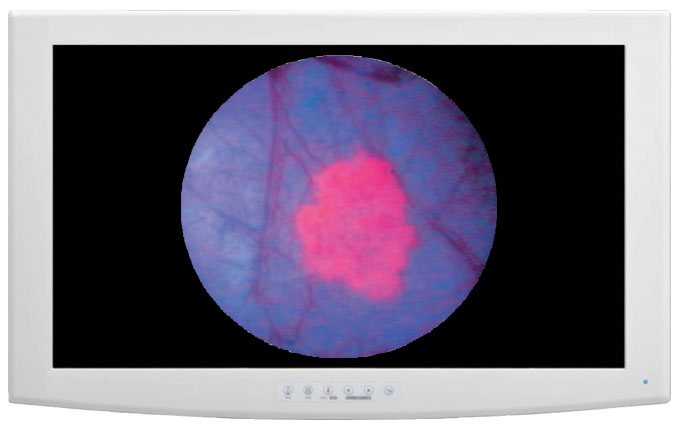Electrifying Biotechnology: A Shot at Shocking Profits
Source: Patrick Cox, Penny Sleuth (4/20/12)
"The discovery of reversible electroporation revolutionized biotechnology research. Cracking open a cell's pores allows researchers to get stuff into cells they weren't able to before."
Fascination with the effects of electricity on the body goes back. . .way back.
In the 1770s Italian physician and physicist Luigi Galvani shocked the world with the discovery that a spark could cause a dead frog's legs to twitch.
In 1802, German chemist Johann Wilhelm Ritter furthered Galvani's research into electrophysiology. He observed how halting a strong current in muscle nerves could cause a muscle to contract.
Electricity as a medical therapy became a high-voltage field of interest. By the late 1800s, scientific literature described how electrical pulses could kill bacteria in river water or change the shape and color of red blood cells. Luminaries, such as Nikola Tesla, pioneered experiments and patented electrotherapeutic equipment.
Although electricity's effect on the body had long been studied by the middle of the 20th century, many of the mechanisms were not yet known. In the 1950s, however, this began to change. For example, in 1951 Nobel Laureate in physiology or medicine Alan Lloyd Hodgkin theorized that the breakdown of a cell's "skin" was at the root of many of electricity's observed effects.
Hodgkin believed cellular membranes were electrically insulating layers, and that strong electricity caused pores to permanently open. Irreversibly opening pores made cells break apart and die. The phenomenon was dubbed electroporation, from the words "electric" and "pore."
However, more experiments by other researchers eventually showed that irreversible electroporation wasn't always the outcome of passing electricity through cells. Cellular pores are electrically charged gates. If pulses of electrical energy are sufficiently low and brief, existing gates open only temporarily. These cells don't die, but this effect can still be useful. With electroporation, the ability of cellular membranes to keep a tight seal to the outside world can be manipulated for short periods of time.
As it turns out, the discovery of reversible electroporation revolutionized biotechnology research. Cracking open a cell's pores allows researchers to get stuff into cells they weren't able to before. By the 1980s, thanks to reversible electroporation, researchers were able to modify genes in everything from mouse cells to bacteria.
Today, electroporation equipment is a standard appliance in research labs. These devices, called electroporators, are used to create things like "knockout mice"—organisms with genes modified to study everything from cancer compounds to Alzheimer's disease. Moreover, many of the new wonder drugs are biologics, which means they are produced by living organisms. Biologics often depend on the use of electroporation to create genetically modified cell lines to manufacture complex therapeutic proteins.
Up until recently electroporation has been limited to the lab. It is something used to introduce molecules that normally won’t be absorbed by cells while in culture. But that has changed. . .
Today this same technology is being applied for the treatment of cancer in living organisms—humans, to be exact. . .
You may already be familiar with some of this technology. I’ve been writing about it for some time.
Therapeutic engineered DNA molecules, known as plasmids, are an exciting, maturing platform for treating disease.
Plasmids are small rings of DNA that are used to turn cells into custom protein manufacturing plants. Once introduced into a cell, these genetic code constructs act like native DNA: They guide the production of proteins. This can include therapeutic proteins. The downside of DNA plasmids as agents to cure disease, however, is that they don't migrate into a cell's interior very well, if at all.
Electroporation solves the problem of DNA delivery. It has been used for this job in labs for decades. It can increase the ability of molecules like DNA to enter cells by 1,000 times or more.
Electroporation drug delivery can be used for far more than DNA vaccines. It can be used to deliver DNA designed for other purposes, as well as for improving the uptake of therapeutic molecules that are already on the market. . .
One use of gene therapies involves injecting directly into tumors.
This focuses on writing the code for these naturally occurring anticancer agents in its DNA plasmids, and then introduces them into tumor cells via electroporation.
Normally, the immune system works to seek and destroy cells that develop mutations. Sometimes, however, mutated cells develop the ability to defend themselves by hiding from the immune system. Alerting the immune system with these signaling proteins allows the immune system to recognize cancer cells and triggers a cascade reaction to destroy them.
Early investors in the technology will be on track to reap rich rewards from breakthrough electroporation platforms. . .it addresses a huge market.
Patrick Cox
Electrifying Biotechnology: A Shot at Shocking Profits originally appeared in Penny Sleuth.
In the 1770s Italian physician and physicist Luigi Galvani shocked the world with the discovery that a spark could cause a dead frog's legs to twitch.
In 1802, German chemist Johann Wilhelm Ritter furthered Galvani's research into electrophysiology. He observed how halting a strong current in muscle nerves could cause a muscle to contract.
Electricity as a medical therapy became a high-voltage field of interest. By the late 1800s, scientific literature described how electrical pulses could kill bacteria in river water or change the shape and color of red blood cells. Luminaries, such as Nikola Tesla, pioneered experiments and patented electrotherapeutic equipment.
Although electricity's effect on the body had long been studied by the middle of the 20th century, many of the mechanisms were not yet known. In the 1950s, however, this began to change. For example, in 1951 Nobel Laureate in physiology or medicine Alan Lloyd Hodgkin theorized that the breakdown of a cell's "skin" was at the root of many of electricity's observed effects.
Hodgkin believed cellular membranes were electrically insulating layers, and that strong electricity caused pores to permanently open. Irreversibly opening pores made cells break apart and die. The phenomenon was dubbed electroporation, from the words "electric" and "pore."
However, more experiments by other researchers eventually showed that irreversible electroporation wasn't always the outcome of passing electricity through cells. Cellular pores are electrically charged gates. If pulses of electrical energy are sufficiently low and brief, existing gates open only temporarily. These cells don't die, but this effect can still be useful. With electroporation, the ability of cellular membranes to keep a tight seal to the outside world can be manipulated for short periods of time.
As it turns out, the discovery of reversible electroporation revolutionized biotechnology research. Cracking open a cell's pores allows researchers to get stuff into cells they weren't able to before. By the 1980s, thanks to reversible electroporation, researchers were able to modify genes in everything from mouse cells to bacteria.
Today, electroporation equipment is a standard appliance in research labs. These devices, called electroporators, are used to create things like "knockout mice"—organisms with genes modified to study everything from cancer compounds to Alzheimer's disease. Moreover, many of the new wonder drugs are biologics, which means they are produced by living organisms. Biologics often depend on the use of electroporation to create genetically modified cell lines to manufacture complex therapeutic proteins.
Up until recently electroporation has been limited to the lab. It is something used to introduce molecules that normally won’t be absorbed by cells while in culture. But that has changed. . .
Today this same technology is being applied for the treatment of cancer in living organisms—humans, to be exact. . .
You may already be familiar with some of this technology. I’ve been writing about it for some time.
Therapeutic engineered DNA molecules, known as plasmids, are an exciting, maturing platform for treating disease.
Plasmids are small rings of DNA that are used to turn cells into custom protein manufacturing plants. Once introduced into a cell, these genetic code constructs act like native DNA: They guide the production of proteins. This can include therapeutic proteins. The downside of DNA plasmids as agents to cure disease, however, is that they don't migrate into a cell's interior very well, if at all.
Electroporation solves the problem of DNA delivery. It has been used for this job in labs for decades. It can increase the ability of molecules like DNA to enter cells by 1,000 times or more.
Electroporation drug delivery can be used for far more than DNA vaccines. It can be used to deliver DNA designed for other purposes, as well as for improving the uptake of therapeutic molecules that are already on the market. . .
One use of gene therapies involves injecting directly into tumors.
This focuses on writing the code for these naturally occurring anticancer agents in its DNA plasmids, and then introduces them into tumor cells via electroporation.
Normally, the immune system works to seek and destroy cells that develop mutations. Sometimes, however, mutated cells develop the ability to defend themselves by hiding from the immune system. Alerting the immune system with these signaling proteins allows the immune system to recognize cancer cells and triggers a cascade reaction to destroy them.
Early investors in the technology will be on track to reap rich rewards from breakthrough electroporation platforms. . .it addresses a huge market.
Patrick Cox
Electrifying Biotechnology: A Shot at Shocking Profits originally appeared in Penny Sleuth.



























































